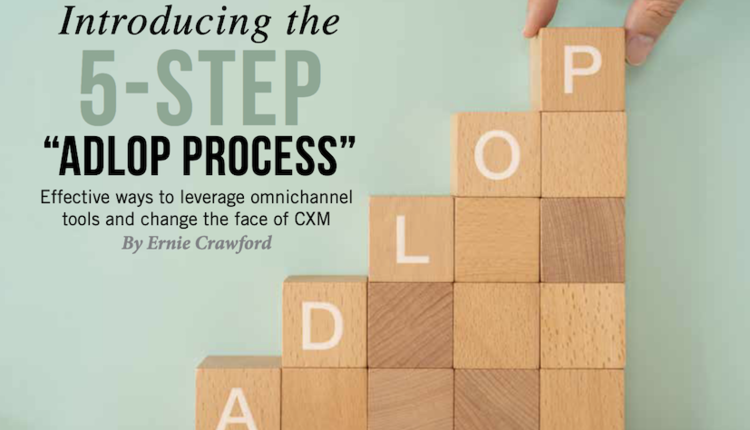Over our last 30 years in the industry, we have seen that transaction document production has dramatically changed. The original environment was much like the Wild West; lots of activity but not much structure. In fact, it seemed like no two document production applications were the same. Today, with the introduction of concepts like lean production and TransPromo, we see standardization in place for document planning and development, as well as in the actual production workflow.
Most of us recognize the enormous staffing and training value provided by the Project Management Professional (PMP) program. When we hire a project manager that has a PMP, we have confidence that the candidate understands the program's examined "areas of knowledge." When we look for an expert on lean quality production, we usually want a Six Sigma Black belt.
About five years ago, industry professionals like us recognized that we needed a PMP-like program. We also recognized that the Electronic Document Professional program was a great starting point. However, it needed to be more in line with key technologies, processes and practices. It also needed to provide multiple levels of skills recognition that corresponded appropriate levels of responsibility. To complement a new program, we needed certified courseware that trained specialists in the areas of knowledge. As a result, the Electronic Document Professional commission (of Xplor International) has expanded the EDP program to provide multiple levels of recognition, and to make them more in line with standardized processes.
The Electronic Document Associate (EDA) designation recognizes electronic document sales, development and support specialists who have shown significantly more knowledge of the industry than someone from outside the discipline. They should be able to perform significant tasks without supervision. It requires candidates to be in the industry for 2+ years and have successfully completed 5 days of Xplor Continuing Education (CEU) certified courses, or can document over 50 hours of attendance at industry-related training. Many reading this article would likely qualify for this designation.
EDPs have clearly shown enough working knowledge of the process to make significant decisions regarding technology or process deployment. For example, management should trust them to lead projects, or support teams. To become certified as an EDP, a candidate must be in the industry for 5+ years, have successfully completed 10 days of Xplor CEU training (or the equivalent), and have shown their working knowledge and experience through 3 work examples. M-EDPs are the recognized experts on specific technologies, processes, or management skills. For example, an M-EDP may have co-developed a composition or print stream transform system. Another might be the expert on print costing, or statement design. By earning their Master EDP, we clearly recognized them as one of the go to people in the industry. To earn the M-EDP, a candidate must have been in the industry for at least 10 years, have been an EDP for at least 5 years, and be able to prove the candidate's area of expertise through a published masterwork.
The benefits of industry-managed training and skills benchmarking provide enormous opportunities for continuous improvement.
For the employer: The process provides a skills benchmark for existing staff. You can now specify that your staff must attain a specific EDP program level for promotion into a more qualified role, and it allows you to choose candidates with the appropriate industry recognition when hiring. It also motivates your team. 88% of employees consider "Having access to training that furthers my skills" important to their job (3rd overall response).
For the specialist: The process gives you industry-accepted recognition for your level of skills. This differentiates you from your colleagues with little experience or knowledge in the complex area of electronic document development and production. The appropriate designation should move your name up the list of potential candidates. Moreover, with the EDA, EDP or M-EDP at the end of your name, the industry will recognize your level of skill.
For the industry: The new program gives the same legitimacy for our area of expertise that CAPM and PMP provides to project management.
So what can I do?
- Understand the levels within the EDP program. Which one is the correct level for each member of my team?
- Introduce the new EDP levels into each team member's professional development program. Set the appropriate level as one of their short-term goals. As the general manager of one large Financial Services document services group recently commented, "shouldn't all of my managers be EDPs? What will take to get them there?"
- Have your team members identify appropriate training that they have taken or plan to take to achieve that level. Many courses from other associations (e.g., AIIM, TAWPI, and FSC) likely qualify.
- Secure professional development funds from your Education or HR department. The typical US organization allocates ~$2,000 per specialist each year for training. Make sure your team is getting its fair share.
WILLIAM BRODDY m-edp is the principal consultant for Transaction Document Production at IMERGE Consulting. He led the recent revitalization of the Electronic Document Professional program as an EDP Commissioner. He also is co-founder of acadami, which develops and delivers Transaction Document Production training.
WILLIAM J. 'BILL' MCCALPIN is principal at MHE, the print2image2Internet specialists. He is also co-founder of acadami, which develops and delivers Transaction Document Production training.













